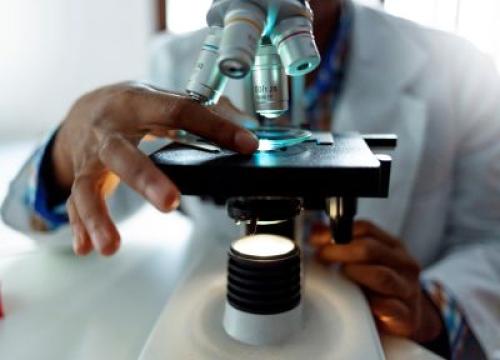Meet a Researcher Working to Delay Parkinson’s via Midbrain Neurons

“I study the brain’s immune cells, called microglia,” said Lindsay Mitchell De Biase, PhD, from the University of California, Los Angeles. “Any population of neurons, including dopamine neurons, are intimately surrounded by and permeated by these cells. Whenever there is a challenge to the central nervous system, whether that is an injury or an infection, these cells change the way they function and interact with neurons.”
Through her 2021 Parkinson’s Foundation Stanley Fahn Junior Faculty Award, Dr. De Biase is studying how microglia influence vulnerability of dopamine neurons to Parkinson’s disease (PD). She and her research team hope to find ways to harness the transformative nature of microglia to preserve dopamine neurons and slow PD progression.
What are microglia?
Microglia are brain immune cells that are “first responders” to brain infection, injury, and disease. They make up about 10% of brain cells. New research shows they also regulate brain development, help maintain neuron health and repair injuries.
Microglial cells regulate central nervous system inflammation and the signaling connections between neurons. Emerging research suggests that mitochondria, organelles which generate the energy necessary to power cells, play an important role in regulating how microglia function. Understanding this interaction between mitochondria and microglial function, particularly the ability of these cells to influence the health of dopamine neurons, is where Dr. De Biase’s research comes into play.
“Many gene mutations that increase the risk for Parkinson’s are mutations in genes related to mitochondrial function,” said Dr. De Biase. “We think that some of these mutations are increasing disease risk, not only by affecting energy production within neurons, but by pushing microglial cells into a damaging, inflammatory state.”
Dr. De Biase is using novel technology to study the role of microglial mitochondria in a mouse model of PD. The intervention strategy she developed could be used in people who are at high risk for developing Parkinson’s, to delay disease development or prevent it. In people with PD, the strategy could create a more neuroprotective environment and preserve remaining dopamine neurons to delay PD progression.
Dr. De Biase’s research involves manipulating the function of microglia to see if it can protect midbrain dopamine neurons, which regulate movement, and play an important role in PD progression. Microglia play a key role in promoting neuronal health by mitigating overactivity and assisting in the formation of new connections between neurons. Dr. De Biase is working to harness these beneficial actions, seeking to “program” microglia to protect dopamine neurons and slow PD progression.
“Microglia are dynamic, malleable cells and could represent therapeutic targets that are highly distinct from others that have been explored thus far,” said Dr. De Biase.
“My greatest hope from our work comes from the fact that microglial cells are so dynamic,” she said. “These cells really can change their properties in many different contexts, and I think that makes them one of the most targetable cell populations in the brain. So, my hope is that what we are learning will reveal strategies that are really feasible for harnessing the neuroprotective abilities of these cells.”
Meet more Parkinson’s researchers! Explore our My PD Stories featuring PD researchers.
Related Materials
Related Blog Posts

Defining Parkinson’s Disease for the Next Generation of Therapies

